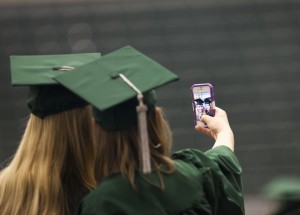It’s no big revelation that classrooms are evolving. They’ve been changing for a long time, with some faster than others to embrace reform. Much of this change is edging us ever closer to what many consider the ideal: Student-centered education. Student-centered learning essentially means challenging the traditional ‘teacher-centric’ approach to give students more control over their learning, to help them become active classroom participants, and to maintain a focus on the 21st century skills needed for the outside world. With many technology-enabled trends playing a key role, what you see in a typical student-centered classroom is less what we’re used to, and more what we need to…
1. Student Voice and Choice
Student-centered learning environments elevate voice and choice to provide an element of student control. With more choice in every aspect of their studies, students pursue their own learning paths, taking responsibility for their own progress and making decisions based on their interests, learning styles and habits. “Our students readily voice their opinions. They know they are valued and respected. They are at the center of learning.” – Tammie Meehan, student-centered primary teacher.
2. Students as Active Learners
With innovative trends like the flipped classroom and BYOD regularly making an appearance, the student-centered classroom is designed to move the focus from instruction to construction. With students firmly at the center, actively involved in their own learning, open collaboration is always visible, whether working in small or large groups where peer feedback is key. “I thought: I’m working too hard, they should be working more than I am!” – Susan Menkel, student-centered Math and Science teacher.
3. Less Focus on the Teacher
The student-centered classroom keeps all eyes on them, as the teacher continuously moves around, taking on a more active role as “guide on the side”. Gaining invaluable insights, providing feedback, and ensuring students are on target, the teacher is a key facilitator of student-centered learning, empowered to reach every single student in a way that traditional methods failed to deliver. “Are teachers obsolete? Absolutely not. But, an educator’s role is changing from the traditional “imparter of knowledge” to that of coach and consultant.” – Paul Brogan, student-centered Math teacher.
4. Skills-Based Learning
With more emphasis on 21st century skills, student-centered classrooms incorporate alternative assessment methods like project-based, inquiry-based and problem-based learning to ensure the development of lifelong learning student skills. Integrating learning platforms that facilitate competency-based learning, student-centered educators make mastery of skills and competencies central to their goals. “Preparing and empowering students for the 21st century begins with a student-centered learning environment.” – Stacey Ryan, student-centered Math teacher.
5. Self-Paced Learning Paths
One key differentiator of the student-centered classroom is its flexibility. Using mobile technology to work around the students, along with adaptive solutions to provide self-paced learning paths, learning is tailored to each student’s needs. Adaptive learning platform, Fishtree, facilitates self-paced, personal learning paths that provide students with the resources and support they need, as they need it. Personalizing the learning experience for every student, student-centered solutions like Fishtree work with the teacher to provide end-to-end support at all times. “I think that Fishtree is a great program because I get all the help that I need right away. I can go at my own pace and don’t have to worry about failing since Fishtree gives me all of the time and resources I need.” – Bella, 6th grade student.
Like what you’ve read? Discover the benefits of a student-centered classroom with the 21st century learning platform, bringing one-to-one instruction to every classroom.
About the author:
Lorna Keane specializes in language teaching and has taught in second and third-level institutions in several countries. She holds a B.A in languages and cultural studies and an M.A in French literature, theory and visual culture. Follow her on Twitter or connect on LinkedIn.
Image credits: Philippe Put / CC BY 2.0
